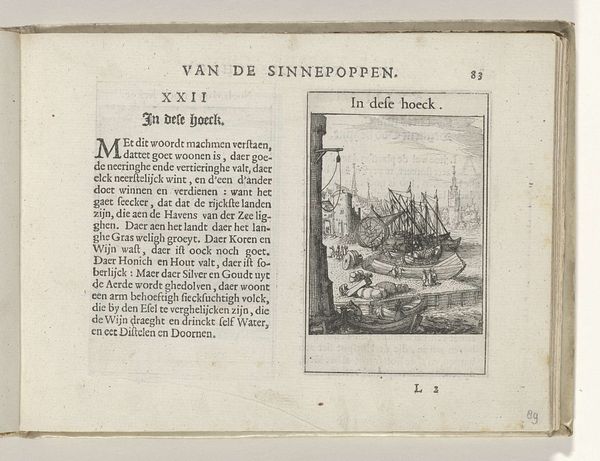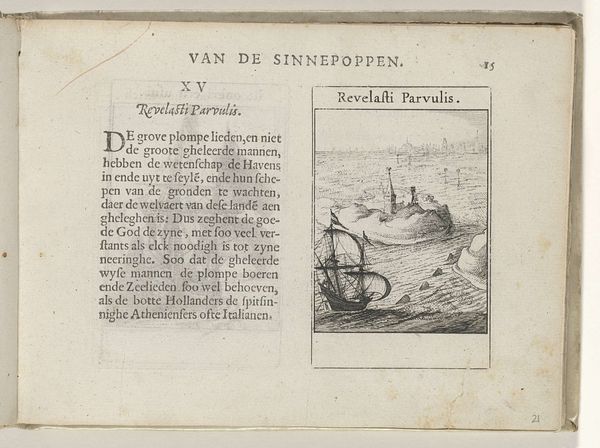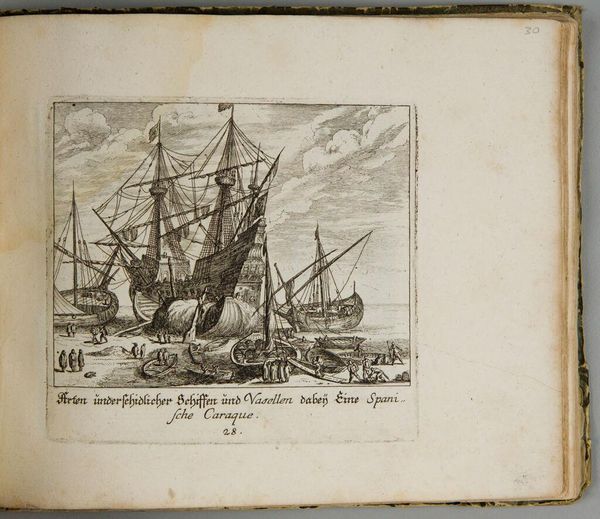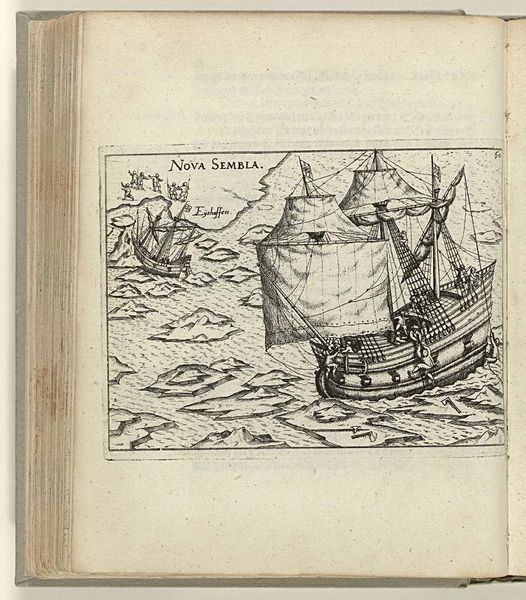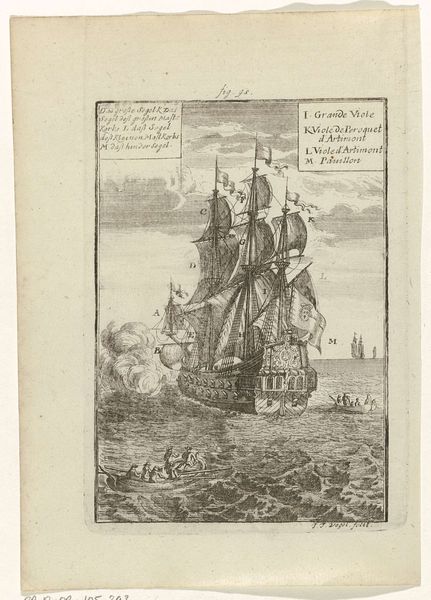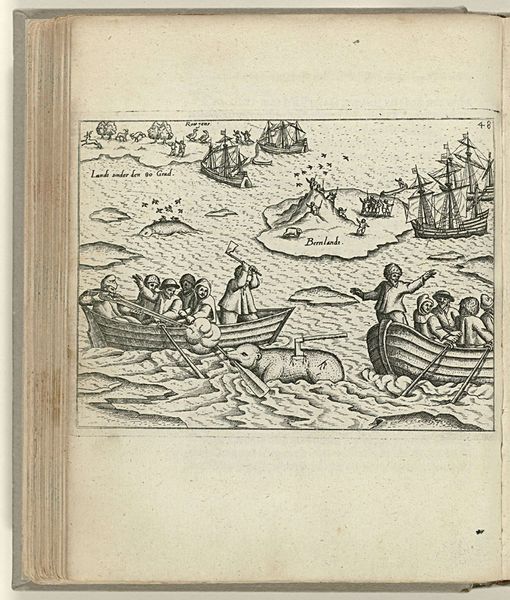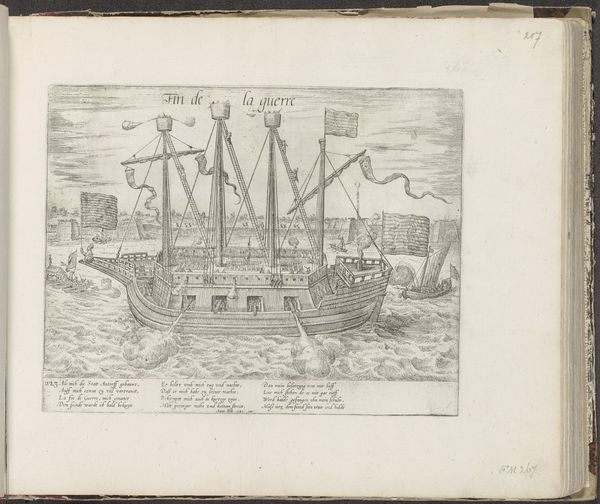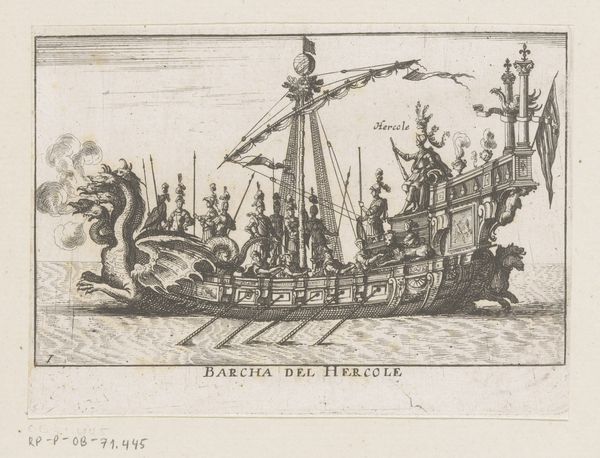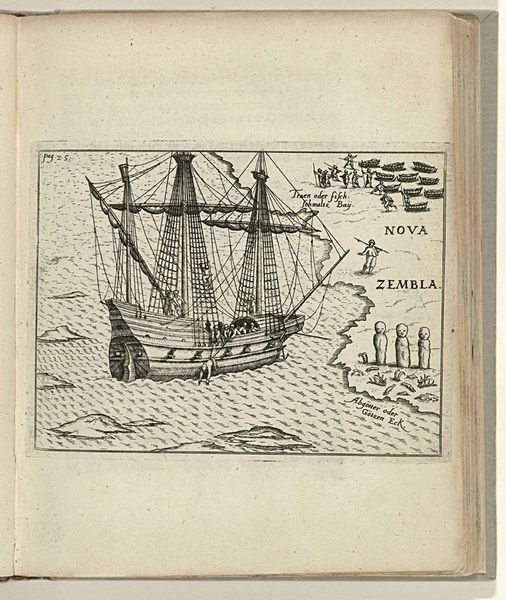
print, etching, engraving
#
narrative-art
#
dutch-golden-age
# print
#
etching
#
genre-painting
#
engraving
Dimensions: height 137 mm, width 188 mm, height 95 mm, width 60 mm
Copyright: Rijks Museum: Open Domain
This engraving was created by Roemer Visscher around the turn of the 17th century, using the intaglio process. The artist would have used a sharp tool called a burin to manually carve lines into a copper plate. Ink is then applied to the plate, pushed into these grooves, and then the surface is wiped clean, before being pressed onto paper. The density of etched lines creates areas of dark and light that bring the scene to life. The image depicts fishermen hauling in their catch, and reminds us of the realities of labor in the Golden Age. Here the hard work of fishing is vividly depicted, as is the inherent risk involved. As the inscription suggests, the fishermen’s hope is that the ‘baet’, or profit, will outweigh the ‘kost’, or cost, of the expedition. But unlike painting or sculpture, printmaking was more affordable, and allowed images and ideas to circulate among a wider population. It gives us a window into the values and material conditions of the time.
Comments
No comments
Be the first to comment and join the conversation on the ultimate creative platform.
